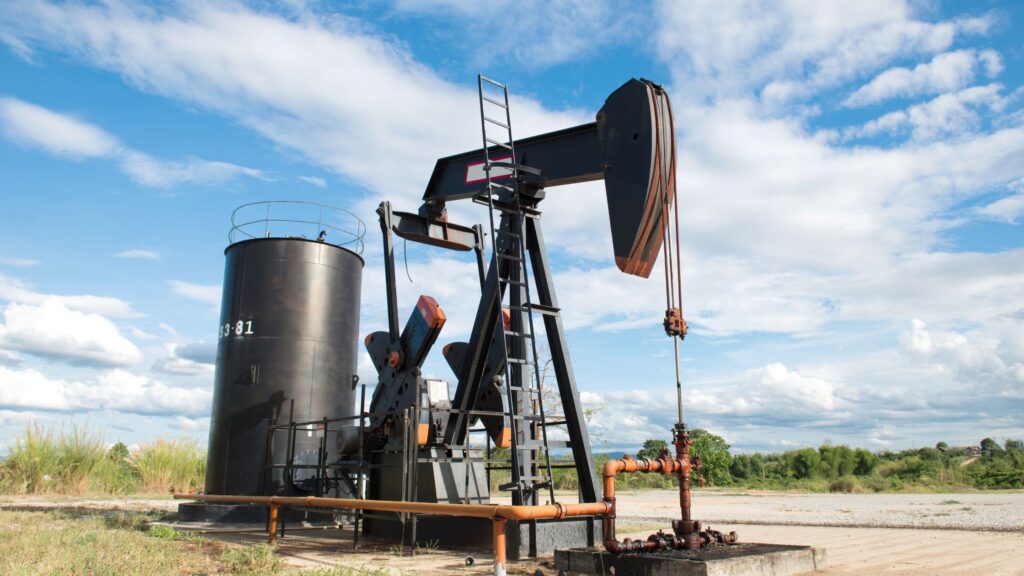Any income earned from the sale or lease of a land’s mineral rights is taxable. As well as income and severance taxes, an operator is also liable for ad valorem taxes. If you’re not sure what it is or how it’s calculated, this complete guide will answer your questions, along with a few more.
What is Ad Valorem Tax in Oil and Gas Industry?

Ad valorem tax in the oil and gas industry is something an operator may be liable for. It is a tax that’s based on the assessed fair market value of an item. In the case of the oil and gas industry, how much an operator has to pay is based on the assessed fair market value of the oil or gas.
What is Ad Valorem Tax Used For?
An ad valorem tax is most commonly used in the taxation of real property or some other underlying asset. The tax rate remains constant, however, the amount a person or business pays changes, based on the fair market value of the property the tax applies to. You’ll generally find ad valorem taxes expressed as a percentage of value.
In the US, the federal government rarely uses ad valorem taxes.
However, when it does, they tend to be applied as tariffs.
Most ad valorem taxes are applied by states and municipalities. At the state level, these taxes are applied as sales taxes. US states rely on sales taxes for a significant percentage of their revenue. In some cases, sales taxes make up the majority of a state’s revenue.
At a municipal level, ad valorem taxes mostly get applied as property taxes, which most towns rely on for most of their operating revenue.
Who Pays Ad Valorem Tax?
Ad valorem taxes are paid by the owner of the property on which the tax is being levied. In the case of the oil and gas industry, the operator or owner of the asset has to pay this tax.
To charge an ad valorem tax, a county or state must assess the oik’s or gas’s fair market value on the property.
Is Ad Valorem Tax the Same as VAT?
VAT is a type of ad valorem tax, much the same as a sales tax.
How Often Are Ad Valorem Taxes Paid?
Ad valorem taxes are determined and levied annually. However, in the case of the oil and gas industry, ad valorem taxes are only payable when there is active production on a property.
What is an Example of Ad Valorem Tax?
To demonstrate how an ad valorem tax works, it’s best to share an example. In the following example, we’ll explain how severance tax, a type of ad valorem tax works:
- Extraction of Oil and Gas: the process starts when the oil or gas is extracted from the ground. At this point, a severance tax must be paid. How much is based on the fair market value of the extracted resources.
- Value Determination: The fair market value of any extracted oil and gas must be determined and it’s typically based on market prices when the oil and gas are extracted. How the tax is calculated depends on a jurisdiction’s specific regulations. It might be calculated based on the fair market value of the resources produced or on the volume.
- Tax Rate: Applicable tax rates for severance tax varied depending on a jurisdiction. It could be a fixed percentage of the volume or fair market value of the extracted resources. Alternatively, it could be a progressive tax rate. This means it increases as the quantity or fair market value of the resources increases.
- Tax Calculation: To calculate the severance tax, the volume or fair market value of the extracted resources is multiplied by the applicable tax rate. For example, if the extracted gas and oil have a combined total value of $1,000,000 and the tax rate is 5%, the severance tax would be $50,000.
- Collection and Payment: Severance tax is generally collected by the government agency responsible for regulating oil and gas activities. It is the responsibility of the oil and gas companies to report their production volumes or values and pay the appropriate amount of tax to the tax authority.
- Revenue Allocation: All revenue generated from severance taxes on oil and gas production is usually allocated to the government’s general fund. However, it might also be dedicated to specific purposes. These purposes might include funding infrastructure projects, education, public services, or environmental initiatives.
What are the Benefits of Ad Valorem Tax?
The advantages of ad valorem taxes are:
- Adjusting the tax burden according to the amount a consumer spend on taxed items
- Reduces an industry’s profit margin
- Automatic adjustment for inflation
What are the Disadvantages of Ad Valorem Tax?
There are also some disadvantages to this type of taxation:
- Because ad valorem taxes are based on fair market value, it’s difficult to predict tax revenue over time.
- Difficult to determine the amount of tax and manufacturers can easily manipulate their oil and gas prices to avoid higher taxes.
- Because ad valorem taxes are tied to oil and gas prices, there is an incentive for manufacturers to produce low-priced products.
- It can lead to large price differences between products.
- The ad valorem tax system is difficult to administer.
What is the Typical Tax Rate or Tax Structure Applied to Oil and Gas Properties For Ad Valorem Tax Purposes?
The typical tax rate or structure varies depending on the state. In Colorado, for example, oil and natural gas as property are assessed at 87.5%. In New Mexico, the ad valorem tax rate is 0.19% of the taxable value of products. When the average WTI price of crude oil is more than $70 per barrel, New Mexico increases the tax rate on oil to 0.24%.
How are Ad Valorem Taxes on Oil and Gas Properties Collected?
The collection of ad valorem taxes also varies depending on the state. For example, in Texas and some other states, ad valorem tax only becomes payable when minerals are produced. When this happens, they are billed and collected once per year.
How Do Ad Valorem Taxes on Oil and Gas Properties Differ Between Onshore and Offshore Operations?
Ad valorem taxes on oil and gas p[roperties can vary between onshore and offshore variations. This is due to differences in jurisdiction, regulatory frameworks, and the specific characteristics of each operation.
What Impact Do Ad Valorem Taxes Have on the Economics and Profitability of Oil and Gas Operations?
It’s not all plain sailing when it comes to the economics and profitability of oil and gas operations. On the contrary, as some potential challenges or disputes can arise in terms of ad valorem tax assessment of oil and gas properties.
Here are some common issues and how they can be resolved:
- Valuation Methodology: Disputes may arise over the valuation methodology used to assess the value of oil and gas properties. Different valuation methods, such as the income approach, cost approach, or market approach, can result in different assessed values. Parties involved may have different opinions on which methodology is appropriate, leading to disagreements.
- Market Volatility: The volatility of oil and gas prices can make it challenging to determine the fair market value of properties. Fluctuations in oil and gas prices can impact the assessed value of reserves and production, leading to disputes between taxpayers and tax authorities.
- Property Classification: Determining the appropriate classification of oil and gas properties for tax purposes can be a subject of dispute. Different classifications may have different tax rates or exemptions. Classifying property as exploration, production, or development can be complex and may be contested.
- Allocation of Costs: Allocating costs to specific properties or wells can be a contentious issue. Oil and gas operations involve various costs, such as drilling, exploration, production, development, and operating expenses. Disagreements can arise over the allocation of these costs, particularly if they impact the tax liability of specific properties.
- Jurisdictional Issues: Oil and gas operations often span multiple jurisdictions, which can lead to disputes over which jurisdiction has the authority to assess and tax the properties. Determining the appropriate jurisdiction can be complex, especially in offshore operations where maritime boundaries and international agreements may come into play.
To resolve these challenges and disputes, various approaches can be taken:
- Administrative Appeals: Taxpayers can often appeal tax assessments through administrative channels within the tax authority. This involves presenting arguments and evidence to support a different valuation or classification of the properties. Administrative appeals provide an opportunity for parties to present their case and reach a resolution without going to court.
- Legal Proceedings: If the dispute cannot be resolved through administrative appeals, taxpayers may resort to legal proceedings. This involves taking the case to court, where arguments and evidence are presented before a judge or jury. The court will evaluate the merits of the case and make a judgement.
- Mediation or Arbitration: In some cases, parties may opt for mediation or arbitration to resolve disputes. Mediation involves a neutral third party facilitating negotiations between the parties to reach a mutually acceptable resolution. Arbitration involves presenting the case to an arbitrator or a panel of arbitrators, whose decision is binding on the parties.
- Legislation or Regulatory Changes: Disputes and challenges in the ad valorem tax assessment of oil and gas properties can sometimes lead to legislative or regulatory changes. Governments may review and amend tax laws or regulations to address specific issues and provide clearer guidelines for tax assessments.
Conclusion
An ad valorem tax is one of many taxes oil and gas producers have to pay. There’s nothing that can be done about avoiding them, but if you understand a little about them, it makes it less painful to pay.
FAQs
1. What is the ad valorem tax on oil and gas in Texas?
In Texas, the ad valorem tax levied on the fair market value of natural gas is 7.5%. The state’s oil production tax is 4.6%.
2. What is the ad valorem tax on oil and gas in New Mexico?
In New Mexico, gas and oil producers have to pay a severance tax based on a fair market value of 3.75% of the sales price at or near the wellhead.
3. What is the ad valorem tax in Oklahoma for oil and gas?
In Oklahoma, the ad valorem tax on oil and gas production is 25% based on the net value of oil and gas.
4. What is ad valorem tax in New Mexico?
In New Mexico, there are two ad valorem taxes, the Oil and Gas Ad Valorem Production Tax, and the Oil and Gas Production Equipment Ad Valorem Production Tax.







